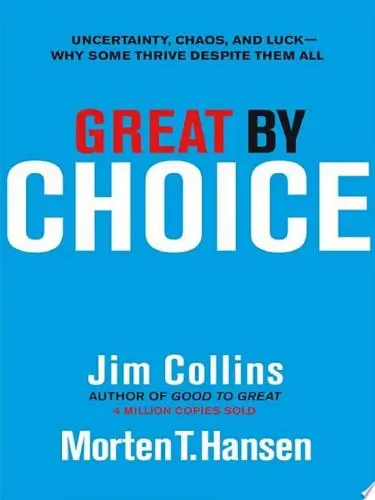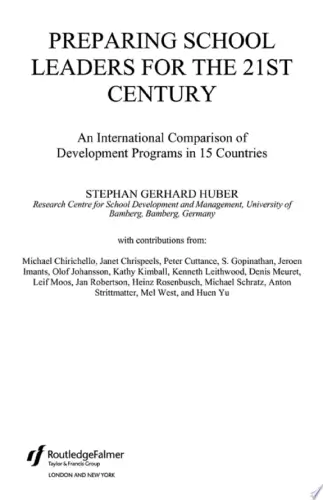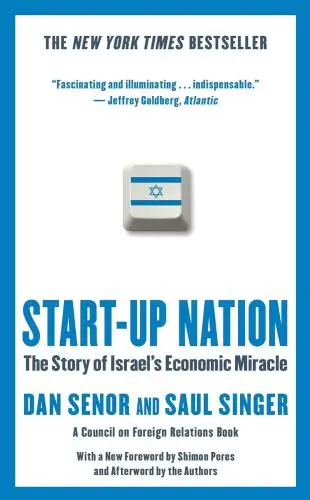The E-Myth Revisited
Why Most Small Businesses Don't Work and What to Do About It
What's it about?
The E-Myth Revisited by Michael E. Gerber is a must-read for entrepreneurs looking to transform their small business into a successful enterprise. Gerber emphasizes the importance of working on your business, not just in it, by creating systems and processes that allow for growth and scalability. He introduces the concept of the "E-Myth," which highlights the misconception that most small businesses fail due to a lack of technical skill, when in reality it's a lack of entrepreneurial know-how. If you're looking to take your business to the next level, The E-Myth Revisited is the roadmap you need.
About the Author
Michael E. Gerber is an American author and entrepreneur, best known for his "E-Myth" book series which focuses on small business entrepreneurship, leadership, and management. His work emphasizes the importance of systems and processes in building successful businesses. Gerber's writing combines practical advice with philosophical insights on business development and personal growth.
10 Key Ideas of The E-Myth Revisited
Embrace the Concept of Working On Your Business, Not In It
Focus on strategic growth rather than day-to-day operations.
This means delegating tasks to employees or automated systems, allowing you to concentrate on expanding your business and exploring new opportunities.
By stepping back, you gain a clearer perspective on the overall direction of your company, enabling more informed decision-making and innovation.
Learn DeeperAudit Your Daily Tasks: Spend a week noting down every task you do. At the end of the week, categorize them into tasks that only you can do and tasks that can be delegated. This will help you identify areas where you can free up your time.
Implement Systems and Processes: Start creating standard operating procedures (SOPs) for tasks that are repetitive and can be delegated. This ensures consistency and quality, even when you're not the one doing the task.
Hire or Outsource: Based on the audit, decide if you need to hire employees or outsource certain tasks. Look for people or services that can handle the tasks efficiently, allowing you to focus on growth strategies.
Schedule Regular Strategic Planning Time: Block out time in your calendar each week dedicated solely to strategic planning and growth activities. Treat this time as non-negotiable to ensure you're consistently working on your business.
- Example
A bakery owner spends a significant amount of time baking cakes, managing inventory, and serving customers. By hiring a baker and a part-time sales assistant, the owner can focus on marketing strategies, exploring new markets, and developing new products.
- Example
A freelance graphic designer spends hours on administrative tasks such as invoicing, client communication, and scheduling. By using automated invoicing software and hiring a virtual assistant for client communications and scheduling, the designer can dedicate more time to creative work and expanding their client base.
Understand and Define Your Primary Aim
Your primary aim is your personal vision for your life, including what you want from your business.
Understanding this helps align your business goals with your personal aspirations, ensuring that your entrepreneurial journey fulfills you personally and professionally.
This clarity guides decision-making and keeps you motivated during challenging times.
Learn DeeperReflect on Your Personal Goals and Desires: Take some time to think deeply about what you truly want from life. What are your passions, your dreams, and your ultimate goals? Write these down in a journal or a document.
Create a Vision Statement for Your Life: Based on your reflections, draft a personal vision statement. This should encapsulate what you aim to achieve in your life, including personal, professional, and even spiritual aspects.
Align Your Business Goals with Your Personal Vision: Review your business plans and goals. Do they help you move closer to your personal vision? If not, consider what changes need to be made to ensure your business is a vehicle that drives you towards your primary aim.
Set Milestones That Reflect Both Business and Personal Achievements: Break down your vision into achievable milestones. These should include both business targets and personal development goals, ensuring a balanced approach to success.
Regularly Review and Adjust Your Plans: Life is dynamic, and so are your desires and circumstances. Make it a habit to regularly review your primary aim, vision statement, and milestones, adjusting them as necessary to stay aligned with your evolving aspirations.
- Example
A graphic designer who loves traveling decides to align their business goals with their personal aim of exploring new cultures. They start offering design services to travel agencies and hospitality businesses, allowing them to combine work with their passion for travel.
- Example
An entrepreneur passionate about sustainability decides their primary aim is to make a positive environmental impact. They pivot their business towards offering eco-friendly products and use part of their profits to support reforestation projects, aligning their business operations with their personal vision.
Develop a Robust Business Plan That Acts as Your Roadmap
A comprehensive business plan outlines your business strategy, market analysis, financial projections, and operational structure.
It acts as a roadmap, guiding your business's growth and development.
Regularly updating your business plan ensures it remains relevant and responsive to market changes, helping you stay on track towards achieving your goals.
Learn DeeperStart with a Vision: Before diving into the nitty-gritty details of your business plan, take a moment to envision where you want your business to be in the next 5, 10, or even 20 years. This vision will guide the direction of your business plan.
Conduct Market Research: Understand your target market deeply. Who are your customers? What do they need? How are your competitors meeting these needs, and where are they falling short? Use this information to carve out your unique value proposition.
Outline Your Business Strategy: Clearly define your business goals and the strategies you'll employ to achieve them. This includes marketing, sales, operations, and any other key areas critical to your business's success.
Develop Financial Projections: Create realistic financial projections for your business. Include startup costs, operating expenses, revenue projections, and break-even analysis. This will help you understand the financial health and viability of your business idea.
Review and Revise Regularly: The business world is constantly changing, so it's crucial to review and update your business plan regularly. This ensures that your business remains aligned with market trends and customer needs.
- Example
Imagine you're launching a local coffee shop. Your business plan would start with a vision of creating a community space that offers not just coffee but a place for local artists to display their work. You'd research other coffee shops in the area, identify your target customers (e.g., college students, remote workers), and outline how you'll differentiate yourself through unique blends or community events.
- Example
Suppose you're starting an online tutoring service. Your business plan would detail how you plan to connect with students needing tutoring, the subjects you'll cover, and how you'll market your services to stand out from competitors. Financial projections might include initial setup costs, pricing strategy, and expected revenue based on the number of students you plan to reach.
Implement Standard Operating Procedures (SOPs) for Consistency and Efficiency
SOPs ensure that all tasks are performed consistently and efficiently, leading to reliable product or service quality.
They also simplify training and onboarding for new employees, reduce errors and variability in outcomes, and can improve overall operational efficiency by providing clear guidelines for everyday processes.
Learn DeeperIdentify Repetitive Tasks: Start by listing all the tasks that are performed on a regular basis within your work or business. This could range from how you manage emails to the way you handle customer inquiries or process orders.
Develop Clear SOPs for Each Task: For each task identified, create a step-by-step guide that outlines exactly how it should be done. This guide should be detailed enough that someone with basic understanding of your work could follow it and achieve a similar outcome.
Test and Refine Your SOPs: Before fully implementing your SOPs, test them out. Have someone else follow your SOPs to complete tasks and gather feedback on clarity and effectiveness. Use this feedback to refine your procedures.
Implement and Train: Once your SOPs are finalized, implement them into your daily operations. If you have a team, provide training to ensure everyone understands how to follow these new procedures. Make it clear that these SOPs are now the standard way of doing things.
Review and Update Regularly: Business processes and tasks evolve, so your SOPs should too. Schedule regular reviews of your SOPs to ensure they remain relevant and effective. Update them as needed to reflect any changes in your operations or improvements in methods.
- Example
A coffee shop could develop an SOP for making each type of coffee drink they offer. This would ensure that every barista makes each drink consistently, leading to a reliable customer experience.
- Example
A digital marketing agency might create SOPs for conducting client onboarding, setting up ad campaigns, and reporting results. This ensures that all team members follow the same process, leading to efficiency and consistency in service delivery.
Adopt a Franchise Mindset Even If You Don't Plan to Franchise
Approaching your business as if it were a franchise encourages you to create systems and processes that are replicable and scalable.
This mindset promotes a focus on standardization, efficiency, and quality control, making it easier to expand your business while maintaining consistency in your products or services.
Learn DeeperDocument Every Process: Start by writing down the steps for each task, no matter how small. This could be how you handle customer inquiries, process orders, or even open and close your shop. The goal is to have a manual that anyone could use to replicate your business operations.
Identify Key Performance Indicators (KPIs): Determine what metrics are crucial for your business success. This could be customer satisfaction scores, the time it takes to deliver a service, or product quality measures. Regularly review these KPIs to ensure your business maintains its standards.
Train Your Team Consistently: Once you have your processes documented, use them as training materials for new hires. This ensures everyone is on the same page and can perform tasks consistently, regardless of who is doing them.
Seek Feedback and Iterate: Regularly ask for feedback from customers and employees on how you can improve your processes. Be open to making changes and refining your systems to enhance efficiency, quality, and customer satisfaction.
- Example
A coffee shop owner documents every step of the coffee-making process, from grinding the beans to serving the drink, ensuring every cup is consistent regardless of who makes it.
- Example
An online retailer creates a detailed process for handling returns, including how to inspect returned items, restock them, and communicate with customers throughout the process, making the experience seamless for both employees and customers.
Deeper knowledge. Personal growth. Unlocked.
Unlock this book's key ideas and 15M+ more. Learn with quick, impactful summaries.
Read Full SummarySign up and read for free!
The E-Myth Revisited Summary: Common Questions
Experience Personalized Book Summaries, Today!
Discover a new way to gain knowledge, and save time.
Sign up for our 7-day trial now.
No Credit Card Needed

Similar Books

Emotional Intelligence at Work
Dalip Singh
Seeing the Big Picture
Kevin Cope
Leadership Is Concept Heavy
Dr. Enoch Antwi
Great by Choice
Jim Collins
The Leader′s Guide to Coaching in Schools
John Campbell
Preparing School Leaders for the 21st Century
Stephan Gerhard Huber
The E-Myth Manager
Michael E. Gerber
Leadership Is Language
L. David Marquet
Start-up Nation
Dan Senor
The Founder's Dilemmas
Noam WassermanTrending Summaries

Peak
Anders Ericsson
Never Split the Difference
Chris Voss
Smart Brevity
Jim VandeHei
The Psychology of Money
Morgan Housel
The First 90 Days
Michael D. Watkins
Atomic Habits
James Clear
Thinking, Fast and Slow
Daniel Kahneman
The Body Keeps the Score
Bessel van der Kolk M.D.
The Power of Regret
Daniel H. Pink
The Compound Effect
Darren HardyNew Books

The ^AOxford Handbook of Job Loss and Job Search
Ute-Christine Klehe PhD
Job Interviews For Dummies®
Joyce Lain Kennedy
Job Interviews In A Week
Alison Straw
Handbook of Career Development
Gideon Arulmani
The Art of Spending Money
Morgan Housel
$100M Offers
Alex Hormozi
A Candle for Kiri
Edna Mae Holm
Principles of Marketing, Global Edition
Gary Armstrong
Serpent Rising: The Kundalini Compendium
Neven Paar

